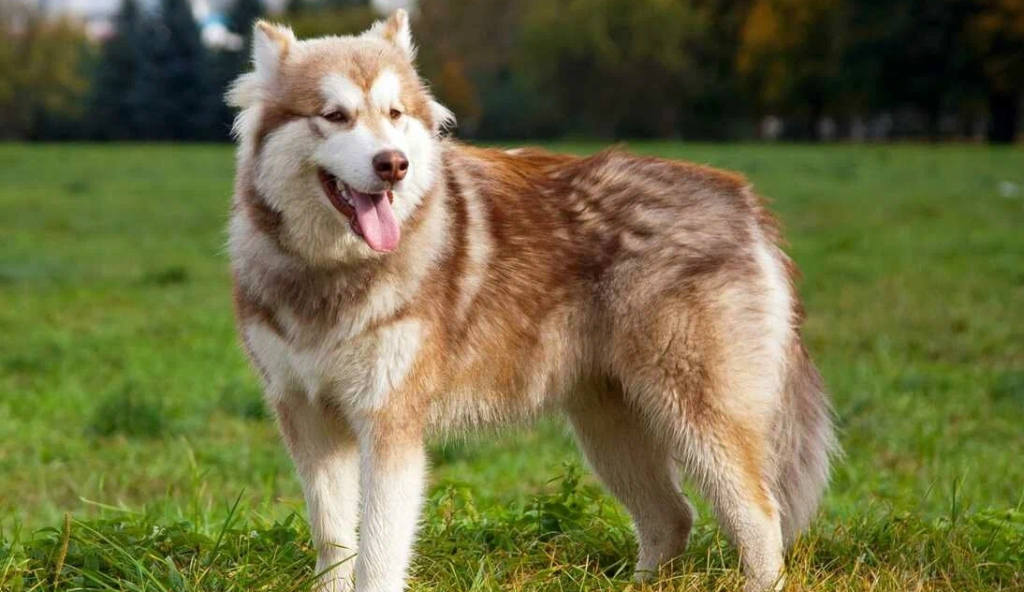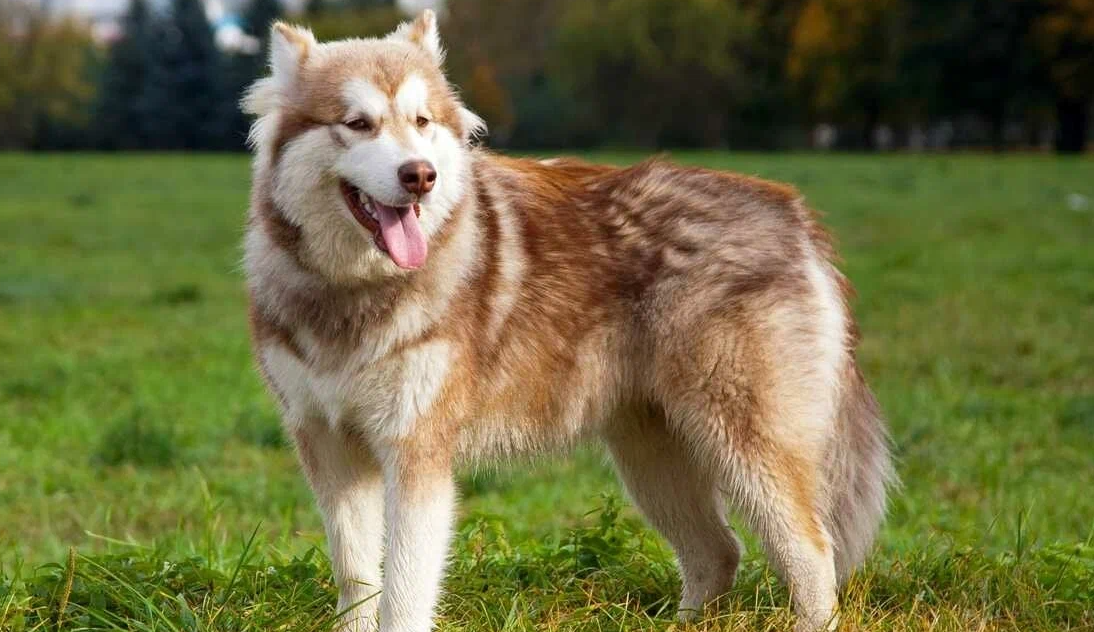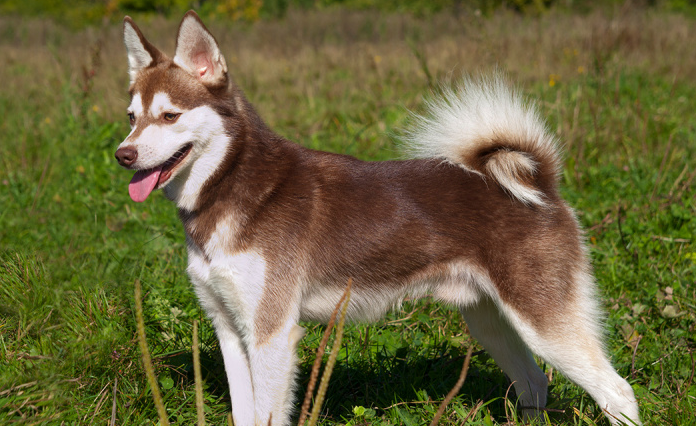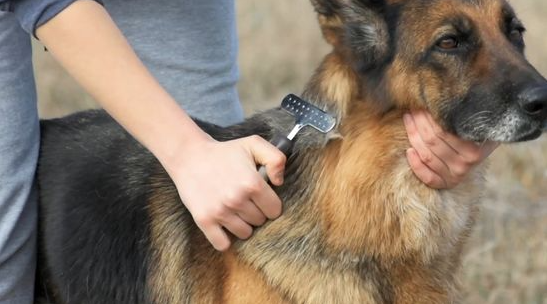The Alaskan Malamute (/ˈmæləˌmjuːt/) is a large and powerful dog breed originally known for its strength and stamina. These dogs were bred to pull heavy loads as sled dogs and worked as hounds. They share many similarities with other Arctic breeds, including the Husky, Spitz, Greenland Dog, Canadian Eskimo Dog, Siberian Husky, and Samoyed.
The Alaskan Malamute
The Alaskan Malamute started in the Kotzebue Sound region of northwestern The Frozen North:
The Mahlemiut, an Inuit clan, first bred the Alaskan Malamute over 2000 years ago. The canines were used for different undertakings, including: Pulling heavy goods, Shipping supplies, and Hunting little animal.
The Alaskan Malamute is one of the most oldest known dog breeds in North America. The breed was brought to the US during the 1890s and became well known quickly. Today, Alaskan Malamutes are famous all over the world.
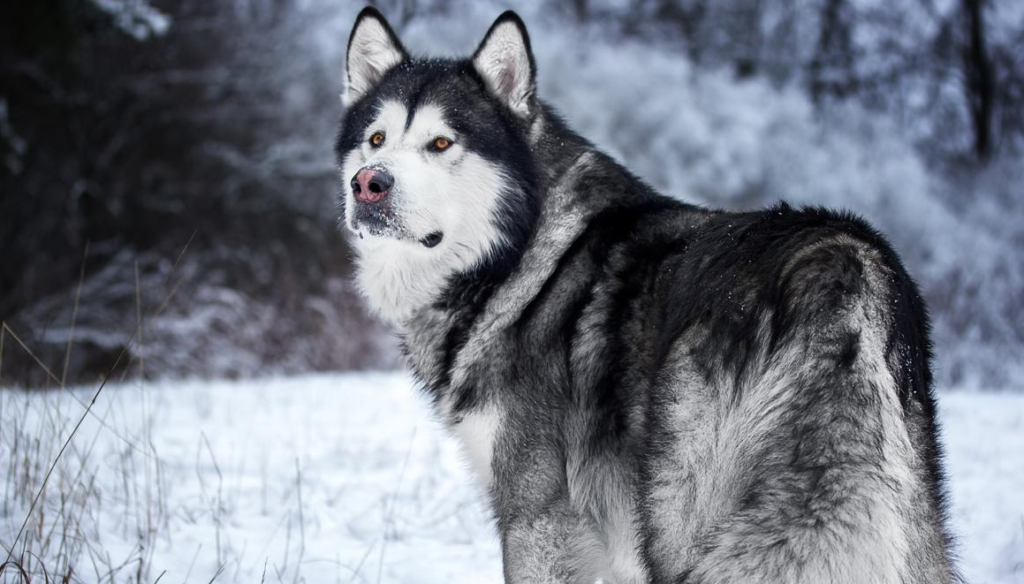
History of the Alaskan Malamute
Origins and Ancestry
Alaskan Malamutes have always been versatile dogs, working, hunting, and living with people. These dogs are known for their excellent hunting skills, allowing them to take down large predators such as bears. They were also invaluable in signaling their owners to plug their blowholes and finding seals. This symbiotic relationship helped both Malamutes and their human companions thrive in the harsh environment of the Arctic.
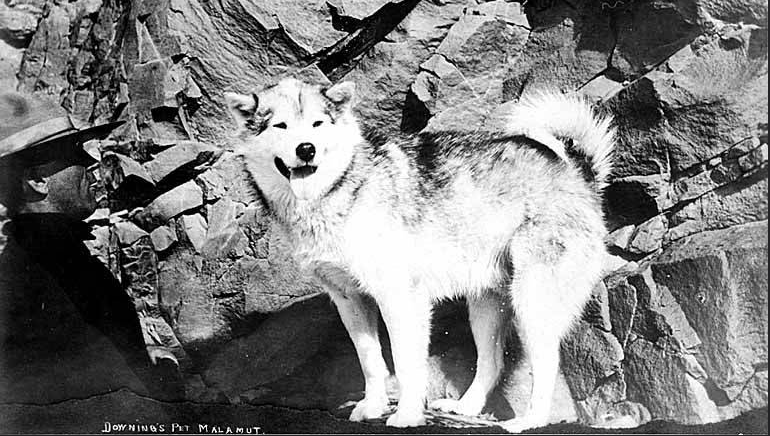
Alaskan Malamute’s Role in History
During the Klondike Gold Rush of 1896, Malamutes and other sled dogs became essential for new settlers and prospectors. Their value soared and they were frequently crossed with imported breeds.
Thanks to Eva B. Seely, breed recognition was strengthened in 1935. At first, many dogs were of unknown origin and only those that seemed to be purebred were kept for breeding. The stud register was closed after a few years, but was reopened in 1947 due to significant breed losses during World War II. Enthusiast Robert J. Zoller took the opportunity to combine the various lines to create the Husky Pack line we know today. Modern Malamutes still reflect these early tribes.
The Malamute’s notable history includes assisting Rear Admiral Richard Byrd’s Antarctic Expedition and aiding miners during the Gold Rush of 1896. They served primarily as search and rescue dogs in Greenland during World War II and as large transport dogs in Europe. Unlike racing sled dogs, malamutes were bred to pull heavy loads, often working in teams of four or more dogs.
Today, the Alaskan Malamute is celebrated in a variety of ways. The University of Washington’s mascot is the Alaskan Malamute, and in 2010 the breed was designated the official state dog of Alaska. Lathrop High School in Fairbanks also proudly uses the Malamute as its mascot.
Physical Characteristics of Alaskan Malamutes
Size and Build
Alaskan Malamutes are huge, solid canines. Guys normally stand between 24 to 26 inches tall and
gauge 85 to 100 pounds, while females are somewhat more modest. This durable form makes them
ideal for pulling profound burdens. Their wide chest and solid legs mirror their normal strength and perseverance.
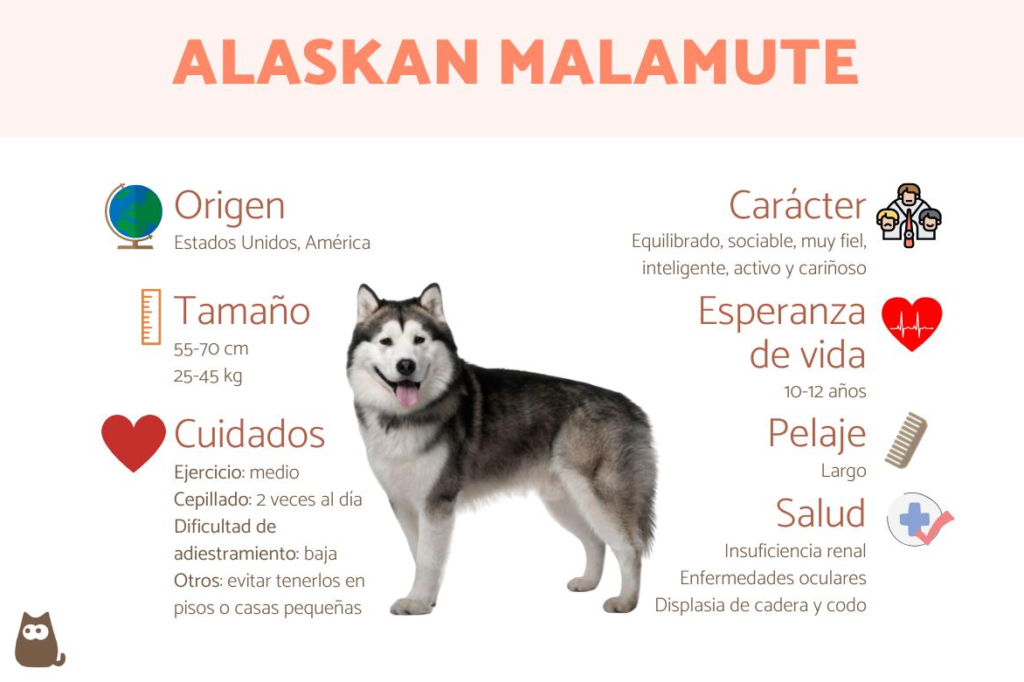
Distinctive Coat and Colors
The Alaskan Malamute’s coat is thick and double-layered to withstand freezing temperatures. Their outer coat is coarse, while the undercoat is dense and woolly, which keeps them warm even in the coldest environments. Common coat colors include black, gray, sable, and shades of red, usually with white markings on their face and belly.
Personality and Temperament of Alaskan Malamutes
Intelligence and Loyalty
Alaskan Malamutes are smart and independent, forming deep connections with their families. Their loyalty and affection mean they often seek close interactions with loved ones. While their independence might come across as stubbornness at times, it’s just a reflection of their strong instincts.
Social Nature and Pack Mentality
Social animals by nature, Malamutes thrive on being part of a “pack.” This breed prefers to spend time with their human family and does best in homes where they aren’t left alone for long periods. Proper socialization is essential to ensure they develop friendly behavior with other animals and people.
Exercise and Activity Needs of Alaskan Malamutes
Energy Levels and Physical Needs
Alaskan Malamutes are firecrackers and need a lot of day to day exercise to remain blissful and solid. They love truly requesting exercises like climbing, running, and sledding. Ensure they get basically a little while of energetic activity every day to keep them fulfilled.
Mental Stimulation and Enrichment
Their smarts mean they blossom with mental difficulties and games. Intuitive toys, dutifulness preparing, and puzzle feeders assist with holding them back from getting exhausted and carrying on. Keeping their psyches drew in is similarly all around as significant as active work for their prosperity.
Training and Obedience for Alaskan Malamute
Challenges in Training
Over the years, I’ve uniquely tested my patience and skills in training various dog breeds, showcasing the unique challenges and humor in dog training. I often hear kids and adults shout “snow dogs!” as they rush over. While their beauty and sled-pulling skills are real, there’s so much more to the Alaskan Malamute. They’re incredibly smart with a great sense of humor, making them one of the most intelligent yet stubborn breeds. They’re definitely more than just a pretty face.
Positive Reinforcement Techniques
Using food treats is especially effective because most dogs are motivated by tasty snacks. Make sure the treat is something your dog absolutely loves. Praise your dog when they exhibit good behavior. Pet them as a reward. You can also give them a favorite toy or engage them in a fun game for showing the desired behavior.
Positive reinforcement involves rewarding your dog for doing something good with something they want. Negative reinforcement is when your dog does something to avoid an unpleasant experience. Alaskan Malamutes are high-energy and athletic dogs that need lots of space and time to exercise. They benefit from early and consistent training to learn good manners.
Alaskan Malamute Health and Lifespan
Common Health Issues
Alaskan Malamutes are by and large sound, yet like all varieties, they’re inclined to explicit medical problems.
• Hip Dysplasia: A hereditary condition where the hip joint doesn’t grow accurately, prompting torment and joint inflammation.
• Waterfalls: An eye condition that can prompt visual deficiency, frequently happening in more established Malamutes.
• Hypothyroidism: A condition where the thyroid organ doesn’t deliver an adequate number of chemicals, prompting weight gain and torpidity.
• Bulge (Gastric Dilatation Volvulus): A perilous condition where the stomach turns, requiring prompt veterinary consideration.
Average Lifespan and Care Tips
The Alaskan Malamute’s best years span 10 to 14 years. Routine visits to the vet are fundamental in making sure they live a long, healthy life. A good diet, exercise, and preventative measures are the keys to helping them avoid potential diseases. They should follow a healthy weight plan and be alert to any joint-related problems for an improvement in their lifespan. Good hygiene in teeth, vaccinations, and parasite prevention is absolutely essential to their general well-being.
Nutrition for Alaskan Malamutes
Here are a few ways to take care of an Alaskan Malamute:
Protein:
Protein is a supplement that an Alaskan Malamute requires to duly develop. It assists muscles in building up and fixing as well as gaining power, which makes sure that the best function of the whole body, the elements, and the processes. Grains, quinoa, and tofu are, by the way, good wells of protein too.
Fat:
Fat is ranked second among the substances required by the dog. The balance of fat-soluble and water-soluble fats is vital, although more crucial than that is getting the proper proportions of them.
Food type:
Your Alaskan Malamute can be fed well-prepared occasions in food specifically meant for the age group he/she is. The valuable options include Slopes Bugmen, Imperial and Administration, and so on. You may set a food schedule at home, which is recommended by your vet.
Treats:
Treats are useful in training but a high intake may surely cause obesity.
Water:
Make sure your dog continually has access to fresh, clear water.
Crude food:
A raw food diet can consist of meat, bone, offal, and only some small amounts of plant aliments. However, most sources disapprove of raw chicken, as it has the risk of salmonella or bacterial infections.
Lactose narrow mindedness:
Dogs who have lactose intolerance may end up tolerating raw cow’s milk and raw goat’s milk better.

Grooming Needs of Alaskan Malamutes
Coat Maintenance and Shedding
Regular Brushing
For me, brushing is the main thing which ensures the balance of a Malamute’s coat. If my Malamute’s thick double coat is filled with too much loose fur I take out my grooming tools and work on it until there is no matting.
Bathing Schedule
Most Malamutes, from my knowledge, don’t need many showers. I use the dog-specific shampoo and let my Malamute take a bath every two or three months when we have to. This is done to keep the oilments in their coat natural.
Seasonal Shedding
An example that might help with OCR is “Handwritten text in Cy-scope is usually legible except for some time when they change their cursive style so I need to write a special recognition rule for each type”.
“Heat signature of an object under a thermal imaging camera will change as well if the composition of an object gets altered by the heating or melting of its crystal structures or if the heat trapped in the object affects the temperature of the surface”.
“Conclusions”, “Domain”, “Level(s) of cognition”, “Purpose”, Instructional material”, “Language of the document”, and “Genre” are presented in the “Language of the document” header.
“Difficulty”, “Chief Information”, “Older”, “Newer”, “Opinions”, and “Style” are the “Style” options marked by the “Language of the document” header.
Some of the critical statements of the manual tell users that they have to report the outbreak of a fire as soon as possible to the fire department and let everybody evacuate the building in a calm and orderly manner.
WC: Modify the answer to show how the disease and climate change may lead to increased wildfire frequency and hence deposition of pollutants in the ice-cored glaciers.
Proper Nutrition
I am the one being responsible every day, I make sure that my Malamute’s diet is composed of only the essential nutrients that promote a healthy coat. I get advice from a vet when it comes to choosing a suitable food that provides the most nutrients for my pet’s coat.
Regular Inspections
Inspecting coat by coat regularly surpasses skin problems and parasites. Some fur may shed off or something might go wrong that would need to be addressed. This is how I get to keep the ‘coat’ of my Malamute, to my overall satisfaction. Mdr!
Professional Grooming
Furthermore, I sometimes leave my Alaskan Malamute coiffed by professionals, especially when there is a heavy molting season. This gives me the power to manage their thick undercoat more efficiently.

Bathing, Nail Trimming, and Dental Care
Here are a few hints for washing, nail managing, and dental consideration for Alaskan Malamutes:
Washing
Alaskan Malamutes usually require a bath every 2 months but they can still be prevented from attending to the bathroom for six to about eight weeks. You can use the conditioner depending on if the coat is dry.
Nail managing
Cut the Alaskan Malamute’s nails using a veterinarians’ nail trimmer or a grinder once a month. Long nails can be a nuisance for your dog and can even be the cause of their foot’s condition to get worse.
Dental consideration
Clean your Alaskan Malamute’s teeth day by day with dog toothpaste.
Ear cleaning
Clean your Alaskan Malamute’s ears weekly for wax, dirt, and other foreign materials. You may use a dog’s ear cleaning solution and a plastic or glass dropper. Slowly and light-footedly massage your dog’s ear with your thumb and forefinger for 30 seconds.
Brushing
Brush your Alaskan Malamute on a regular day with an oval pin brush and a metal comb. You also should look out for mats, which are withering and as well likely to cause infection. During the shedding season, which happens twice a year, you can include an undercoat rake in your brushing routine.
Living Environment for Alaskan Malamutes
Space Requirements
As an owner, one of the things I saw was that Alaskan Malamutes need a lot of space in order to be at their best. This is what I found to be true:
A big yard with a fence is the best
Required are frequent outdoor expeditions, if living in an apartment.
The indoor living space must be enough for the dog to move around freely and not feel confined.
Temperature Considerations
Since I am a Malamute owner, I can say that:
They are cooler at a cold temperature
Thrive in weather below 70°F (21°C)
If anything, the dog is additional precautions and cooling tools to be given during warm weather
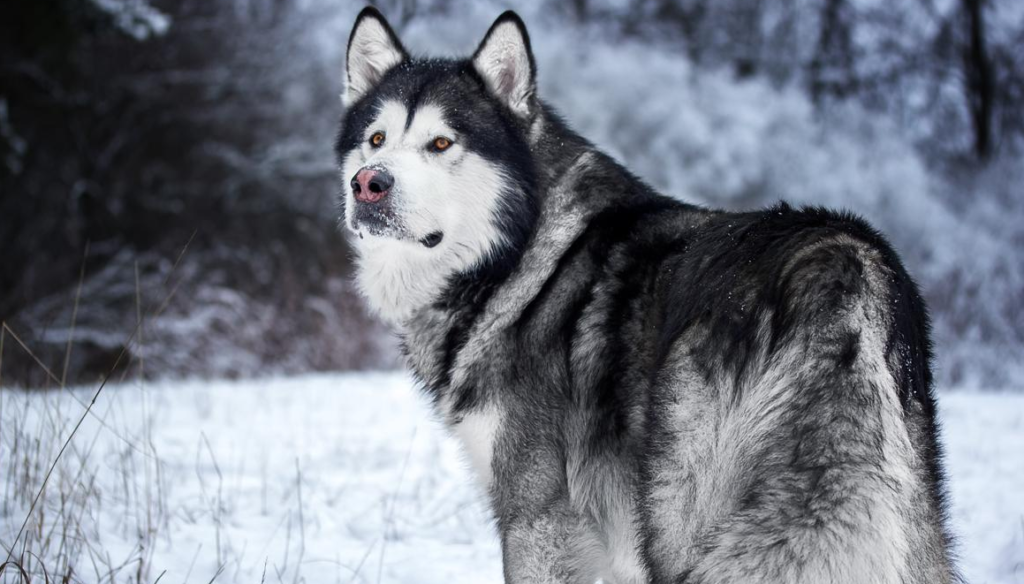
Exercise Area
I make sure my Malamute has:
The chance to get out consistently and run in a protected, open air area
No-risk zones for running and playing
The ability to take both short walks and long-haul trails
Sleeping Arrangements
I’m all about creating an environment that:
A big, comfortable bed or the dog’s sleeping spot is available
A cool area where the pet can rest, particularly during the summer months
The option of both outdoor and indoor sleep is given rights to them
Mental Stimulation
I’ve discovered that the most rewarding environment for a Malamute includes:
Toys that challenge the mind
Puzzle feeders during the meal times
Areas that the dog can dig to explore
Social Interaction
My Malamute flourishes in the company of:
Consistent family-time
Occasions for interactions with other dogs that they can trust
The house setup that offers easy access for the dog to be a part of our family at all times
Safety Considerations
To be safe, I always take these steps:
Strong, isolated material for eliminating escape routes is provided as a preventative measure.
Also, the removal of any hazardous material like toxic plants from the yard, and etc.
Making childproof arrangements as Malamutes can play naughty at times
Socialization with Different Pets and Kids
Socialization with Other Dogs
During my research, I noticed that Malamutes love their kin when they are properly socialized. This is what I have concluded:
1. Overcoming dominance issues is easier with the right conditions of socialization
2. Play dates under the oversight of different canines help to foster the canines interactive abilities
3. Malamutes can even develop a prey drive to the smaller dogs, thus one needs to be careful when dealing with them.
Interaction with Cats
In my experience, Malamutes and cats can live together, but it takes very careful introduction and constant supervision to handle the:
1. Making gradual and controlled introductions is the rule
2. The Malamute’s prey drive can be brought about the, by fast movements, you can observe the cat
3. Early socialization with cats often leads to peaceful cohabitation
Malamutes and Small Pets
According to my Hollywood, the Malamutes need to be more cautious in the presence of small pets:
1. Their strong prey drive can be a risk to the safety of small animals like rabbits or hamsters
2. Always, the interaction must be under the human supervision
3. Keep small animals away from the Malamutes whenever the case permits this.
Interaction with Children
In my report, of course, Alaskan Malamutes could be great playmates for kids if they are trained in the right way:
1. Most of the time they are patient and even a little gentle with children
2. Because of their size, it is really exercising to make sure that they do not accidentally knock over
3. It is important to instruct children on how courteously they will behave with the dog
Socialization Tips
Having gained information for my own use, I now delineate the following general guidelines for socializing Alaskan Malamutes:
1. If we can start even before the puppy is adopted that is a perfect period of socialization
2. Allow them to determine the environmental conditions, and they will be the winners, when people and animals are ideal present with them, they can have good results.
3. Use the rewards of positive reinforcement to stimulate positive behavior
Play with new animals as much as possible under supervision, particularly with children as part of socializing
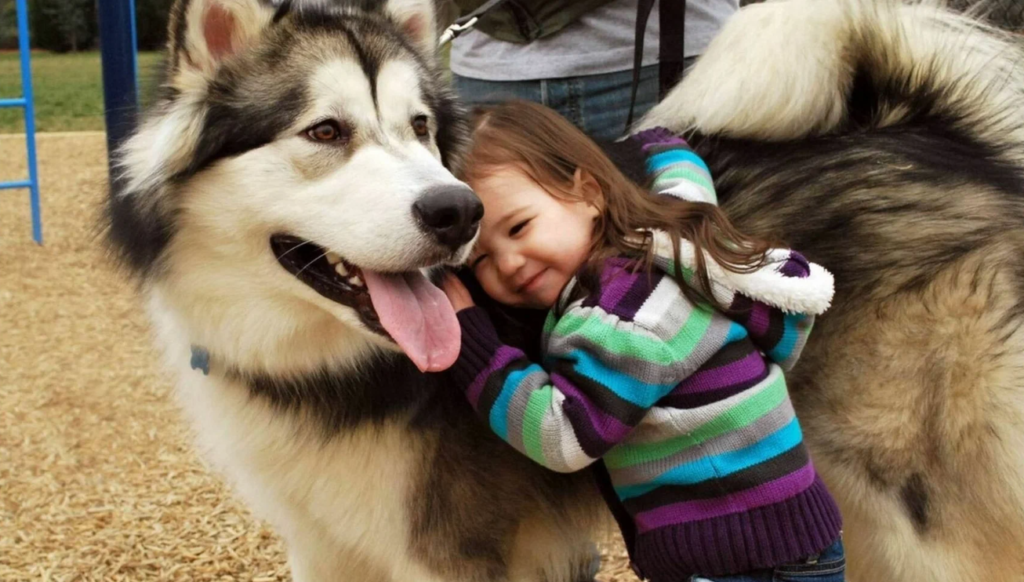
Alaskan Malamute vs. Siberian Husky
Physical Differences
Being a professional in the field of icy-dog breeds, I assume that I am the best candidate to give well-grounded explanations about the characteristic physical features of Alaskan Malamutes and Siberian Huskies:
- Size: Alaskan Malamutes are usually significantly larger and weightier. It is my perception that they are about 75-85 pounds, while Siberian Huskies are relatively small, weighing 35-60 pound which I have observed. On the other hand, as Malamutes, they have a stronger, more muscular build than Huskies.
- Build: From my personal experience, Malamutes seem to be more powerfully build; those are dogs with relatively bigger muscles. In contrast, Huskies have less fat, so they look leaner and slightly more athletic.
- Coat: However, dogs of both breeds have got twin-layered fur, yet the Malamutes usually have greater bristly undercoat. Those of Huskies, on the other hand, are short and fleecy.
- Eyes: Although brown eyes also are seen among Siberian Huskies, they usually have sapphire blue eyes – one of the most rarely colored eyes. Malamutes watch the world with brown eyes, mostly.
- Tail: The Malamute’s tail is bushier and usually it is held over its back. The Husky’s tail, too, is an upward one and although less fluffy, it copies more appropriately the look of its arboreal counterpart.
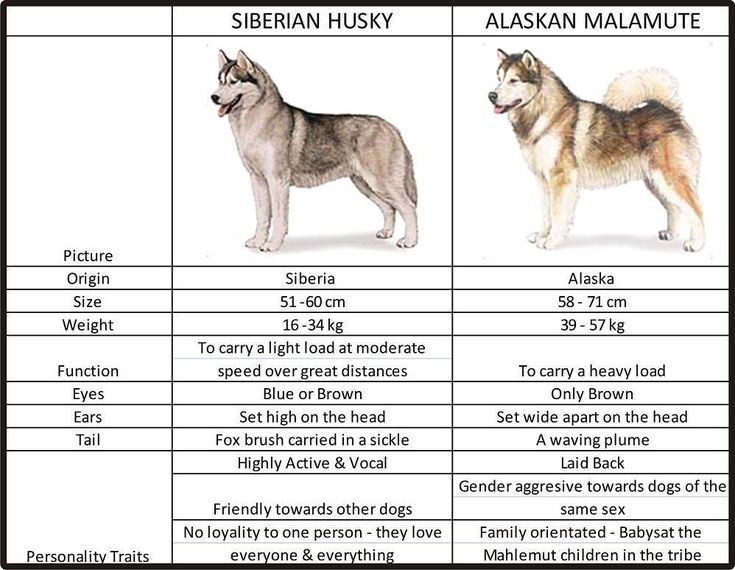
Temperamental Differences
My first-person communication with them would lead me to this differentiation of personalities:
- Energy levels: Siberian Huskies are a little bit more nervous and as a result, they need more physical exercises. I have noticed that even though Malamutes are quieter, they also need to be the main physical strength factors in their environment. Huskies are the least diligent of the two but if fed, they such as one dish better than the other.
- Independence: My dealings with Malamutes indicate that they tend to be less obedient and a bit obstinate. Huskies are generally happier to play along but they can be stubborn too.
- Vocalization: Huskies are quite famous for their howling and talking and can bark at any given time. Malamutes are not noisy. Yet they are the glory of silence. Even though they might become vocal if they need something from their owners.
- Social behavior: From my experience as a breeder of animals in our kennel, I can tell you that a purebred Siberian Husky is usually more sociable and brave in meeting strangers than a Malamute. Malamutes can be reserved creatures when strangers are around, but they are attentive and loving to their families.
- Work attitude: Malamutes are raised and utilized specifically for gravely pulling and they are hardworking dogs. Huskies, on the other hand, being sprinters and endurance animals, can perform with more ease in fast-paced activities.
Conclusion
The Alaskan Malamute is one of the amazing dog breeds that embody power, fidelity, and smartness in a big, loving form. Even though they are fantastic pets for the right family, they still demand a lot of time, effort, and resources to care for them. By knowing the specifics of their character, requirements, and history, you can be the one to make a Malamute’s life meaningful and, in turn, enjoy the company of the spectacular breed.

